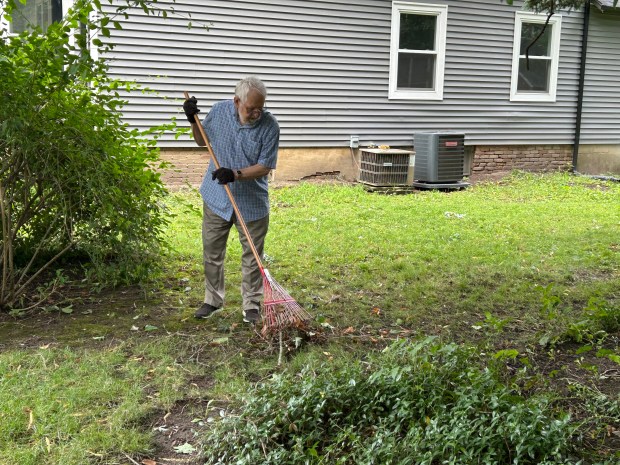A temporary Disaster Loan Outreach Center has been set up at the Valparaiso branch of the Porter County Library System to help residents and business owners learn about and apply for federal and state disaster recovery loans and grants for those who suffered damage from the severe storms and tornadoes that went through the region on July 15.
The office will be open until Aug. 27.
The deadline to apply for physical damage is Oct. 7, and May 7, 2025, for economic injury. As of Thursday, six residents had visited the center and four filed applications for assistance, according to David Hosick, director of public affairs for the Indiana Department of Homeland Security. It’s one of six such centers being operated across the state.
Forty-five applicants have applied across the disaster declaration area that also includes Elkhart, Jasper, Kosciusko, LaGrange, LaPorte, Lake, Marshall, Noble, St. Joseph and Starke Counties in Indiana, and Berrien, Cass, and St. Joseph Counties in Michigan.
The process of assisting residents and business owners with the storm damage began when the Porter County Emergency Management Agency worked with the IDHS to do damage assessments of property throughout the county to determine if the amount of damage exceeded thresholds which would allow citizens to access assistance.
While damage did not meet the level required to qualify for Federal Emergency Management Agency programs, it does allow for low-interest loan applications with the Office of Disaster Recovery and Resilience of the U.S. Small Business Administration.
Hosick explained that people start the process with SBA counselors. If they don’t qualify for the SBA’s low-interest loans they may then move on to IDHS counselors.
“They know an applicant going through our process has been vetted,” said Karen Knapik, public affairs acting supervisor with Field Operations Center East of the SBA. “I’m so glad they have a program,” she added, “because we visit so many places that don’t have a backup.”
While any owner or renter can apply for low-interest loans with the SBA, regardless of insurance status, Hosick said only those without insurance can apply for grants from the state’s Disaster Relief Fund. “It’s kind of the backup to the backup,” he said.
As of July 1, grant maximums went up from $10,000 to $25,000. The fund is filled by the Public Safety Fee on the sale of fireworks.
For business owners, the Small Business Development Center, a resource partner of the SBA, offers loans that come directly from the Treasury Department for physical damage, as well as economic injury. The SBA also offers both residential and business loan applicants an additional 20% above the disaster damage amount to finance improvements to prevent future damage.
“The President wants us to make sure we are making people more resilient,” Knapik said.
While the library keeps in regular contact with Porter County EMA Director Lance Bella to update its preparedness as a cooling center and emergency shelter, “this is the first time outside of him checking that we’re open that we’ve been asked to do something like this,” said Porter County Public Library System Executive Director Jesse Butz. While it may be the first time the library has been used for such a purpose, it’s not likely to be the last.
“Unfortunately, Mother Nature is not slowing down,” Knapik said. “We used to have a down season.”
Residents can visit the center from 9 a.m. to 6 p.m. Monday through Friday and from 10 a.m. to 2 p.m. Saturday in the library’s second-floor conference room at 103 Jefferson St.
“If there are questions about whether or not a person or family qualifies I just encourage them to go and talk to a specialist,” Hosick added. He said people should bring as many documents as they can, everything from bank statements and IDs to repair estimates.
Shelley Jones is a freelance reporter for the Post-Tribune.





